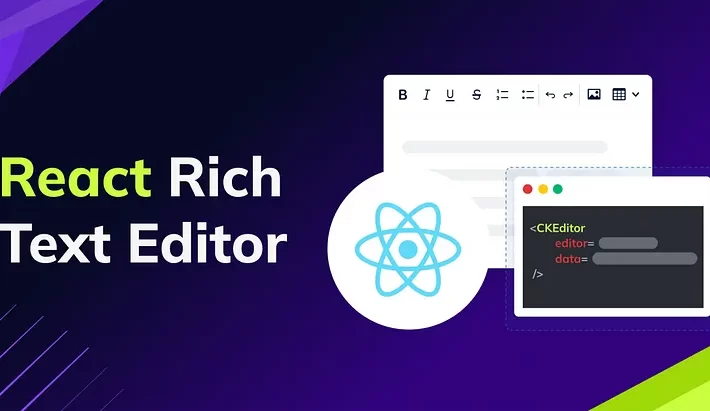
Introduction
In today’s dynamic web development landscape, developing user-friendly interfaces that allow content creation is paramount. This is where rich text editing (RTE) shines, allowing users to format text, embed media, and visualize the most advanced version of their content in real time. React WYSIWYG editors, which combine the power of RTE with the flexibility and efficiency of the React framework, are game changers.
The Basics of Rich Text Editing
Rich text editing extends the capabilities of plain text editing by giving users a visual and interactive environment to generate content. This involves integrating formatting options such as bold, italics, and various text styles into web development, which makes it different from the basic nature of plain text.
The evolution of rich text editing has changed how users interact with content, making editing more intuitive and dynamic.
Why React WYSIWYG Editors are a Game-Changer
React WYSIWYG editors are game changers that integrate effortlessly with React and revolutionize content creation. Their modular architecture and real-time preview increase engagement, while customized features and state management improve integration.
Whether a beginner or an expert, these editors will help you create dynamic, engaging web experiences. They set new standards for content editing, making them an attractive choice for web development in the future.
Key Features of React WYSIWYG Editors
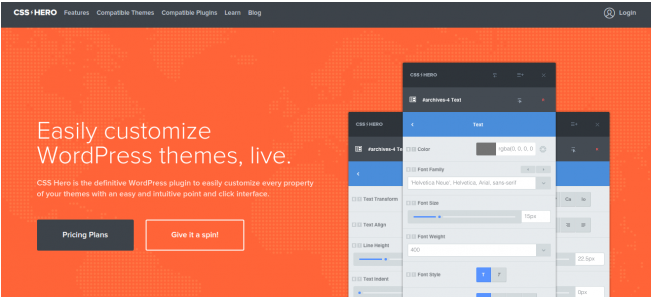
React WYSIWYG editors provide a robust set of features that set them apart as essential tools in online development, particularly when it comes to terms like text formatting, media embedding, and real-time preview.
Text Formatting Capabilities
React WYSIWYG editors excel at offering a rich set of text formatting capabilities. Both developers and users may easily apply styles, manage fonts, and control the appearance of text, increasing the richness and visual attractiveness of information.
Media Embedding Functionality
These editors offer smooth media embedding by allowing dynamic content development. Users can easily incorporate images, videos, and other multimedia elements into their content, increasing the overall engagement and multimedia storytelling capabilities of web apps.
Real-Time Preview
A notable feature is the real-time preview, which allows users to see the instant visual impact of their adjustments. This feature improves the editing experience by creating an interactive environment in which changes are reflected in real-time, promoting efficiency and creativity.
Choosing the Right React WYSIWYG Editor
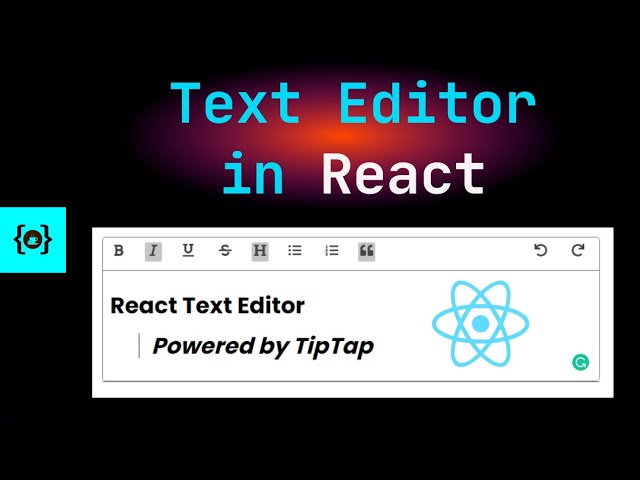
When it comes to React WYSIWYG editors, the decision-making process is critical. Choosing the best editor for your needs requires a careful examination of crucial variables to ensure smooth integration and an improved user experience.
Editor Customization
In the world of React WYSIWYG editors, one size does not fit all. Consider the level of customization provided by each editor. A versatile editor should allow developers to customize the interface, styles, and functionalities to meet the project’s needs.
Ease of Use
The ease of use of a React WYSIWYG editor is critical. Evaluate the interface’s usability and accessibility to ensure users of all skill levels can easily navigate and use the editor’s features for text formatting, media embedding, and real-time previews.
Compatibility
Compatibility is an essential component in successful integration. Ensure that the editor you choose is compatible with the React ecosystem. Test for compatibility with React’s component-based design, state management, and other critical features to guarantee a smooth collaboration between the editor and your React application.
Implementing a React WYSIWYG Editor
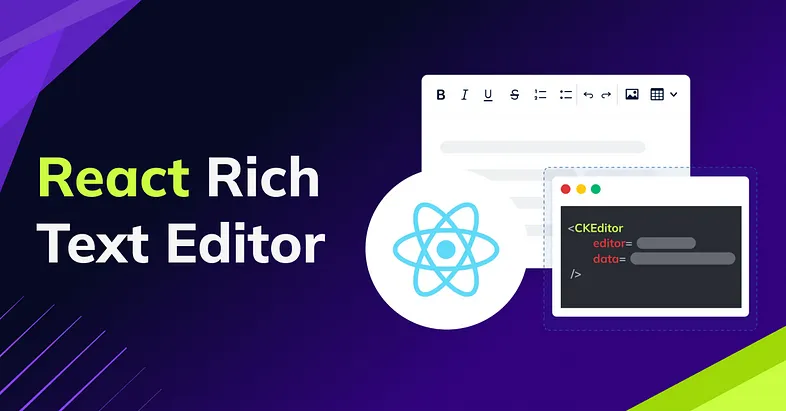
To help you through the process, most editors give thorough documentation and code samples. Here’s a general plan of action:
Selecting a React WYSIWYG Editor
Begin by selecting a React WYSIWYG editor that meets your project requirements.
Install the Selected Editor
Install the selected React WYSIWYG editor using your package manager (npm or yarn). This step guarantees that the editor’s files and dependencies are easily accessible in your project.
Import the Editor Component
Import the editor component into your React project files to integrate it.
Integrate the Editor Component
Insert the editor component into your application’s JSX. Modify the element with available props to match the needs of your project.
Handle State and Data Flow
Use the editor component to handle the state and data flow of your React application.
Test Thoroughly
Test the React WYSIWYG editor in a variety of settings to ensure compatibility and responsiveness. Take note of how the editor interacts with the layout and themes of your application to ensure a consistent user experience.
Best Practices For A React WYSIWYG Editor
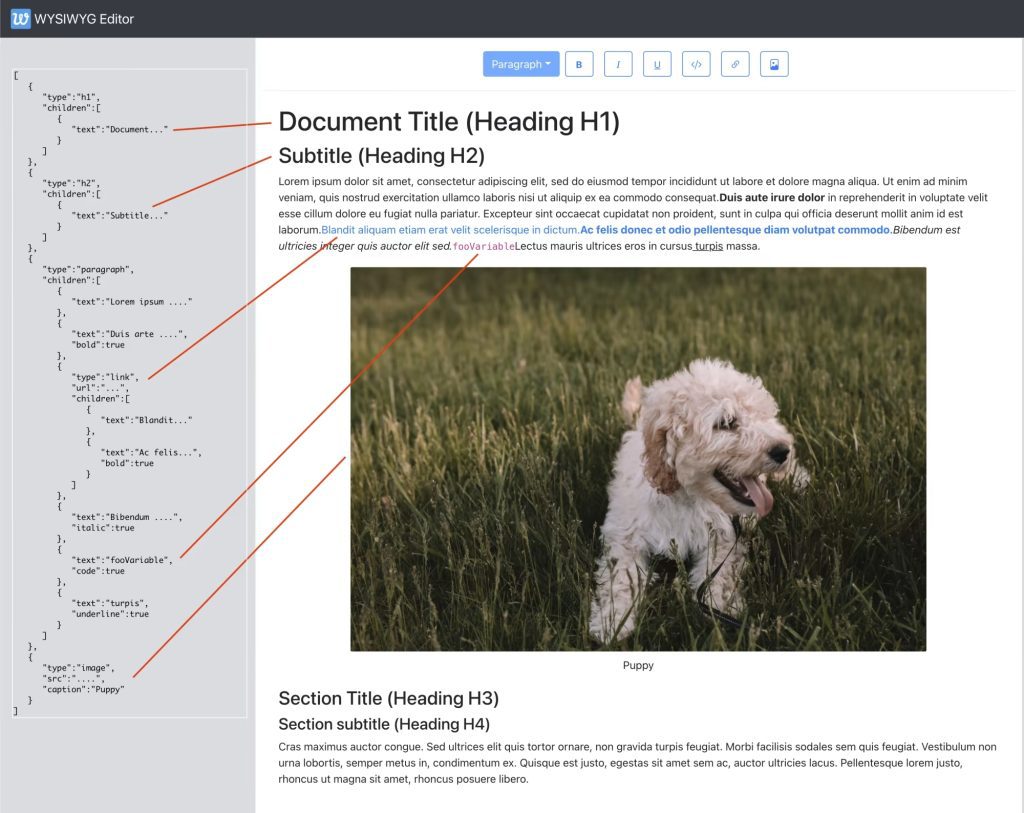
Using React WYSIWYG editors effectively involves using best practices to guarantee optimal performance and overcoming typical issues with development.
Lazy Loading
Use lazy loading for the editor to improve performance by loading components only when needed. This avoids consuming unneeded resources during the initial page load.
Minimize Heavy Plugins
Keep the use of heavy plugins to a minimum. To avoid needless bloat and possible performance concerns, only use plugins that are absolutely necessary for your project.
Server-Side Rendering (SSR)
Consider server-side rendering for the initial content display. This approach can improve the loading time of your application, especially when dealing with content-heavy pages.
Troubleshooting Common Issues For React WYSIWYG Editor
Content Discrepancies
Check for consistency in state management if there are disparities between the content in the editor and what is saved or shown. Check that the editor’s content is in sync with the status of your application.
Issues With Responsiveness
Review the implementation for potential bottlenecks if the editor appears unresponsive or experiences delays. Reduce needless re-renders and ensure effective component rendering to improve performance.
Conclusion
React WYSIWYG editors are a big leap forward for web development. They combine the best of React and rich text editing, making content creation and management a breeze for developers.
As the web keeps changing, React WYSIWYG editors are leading the way. They’re setting new standards for how content should be edited, making it intuitive and fun for everyone.
Frequently Asked Questions
How are React WYSIWYG Editors different from traditional text editors?
React WYSIWYG editors stand out by providing users with a visual and interactive interface, allowing them to see the final formatting of their content in real time. Designed to work with React-based applications to make dynamic content management in web development more efficient and user-friendly.
How can you integrate a React WYSIWYG Editor into an existing web app?
Integrating a React WYSIWYG editor involves importing the editor component into your React project, customizing it to match the needs of your application, and verifying it works well with your application’s state and data flow.
Are There Any Performance Considerations When Using React WYSIWYG Editors?
Yes, when using React WYSIWYG editors, performance is important. The editor’s impact on your application’s load time, responsiveness to user input, and efficiency in handling large amounts of text or media are all factors to consider. Update your React application and the editor’s package on a regular basis to benefit from the latest performance improvements.





